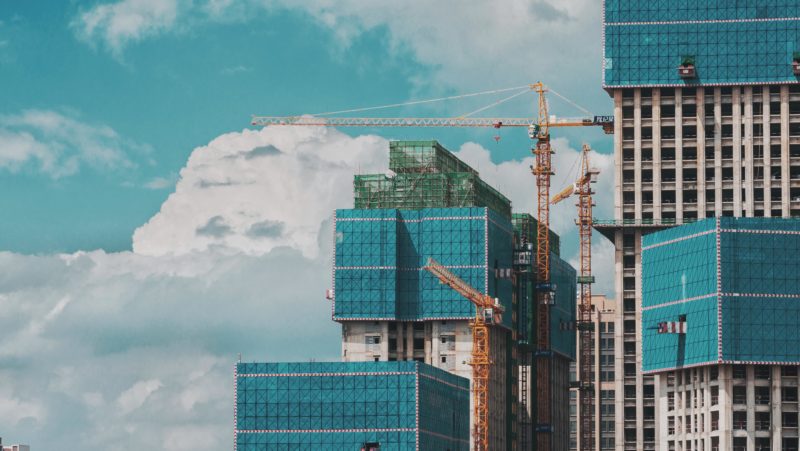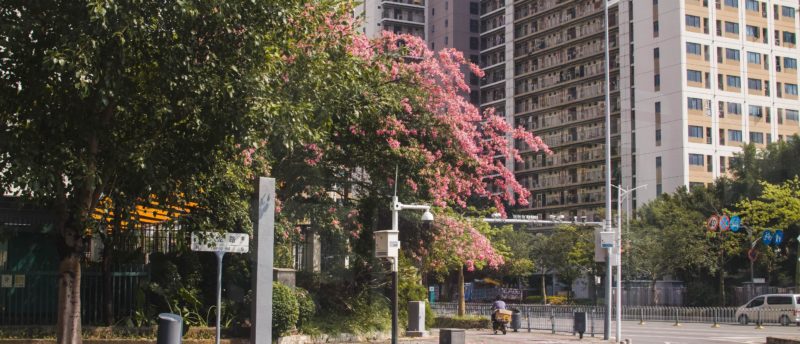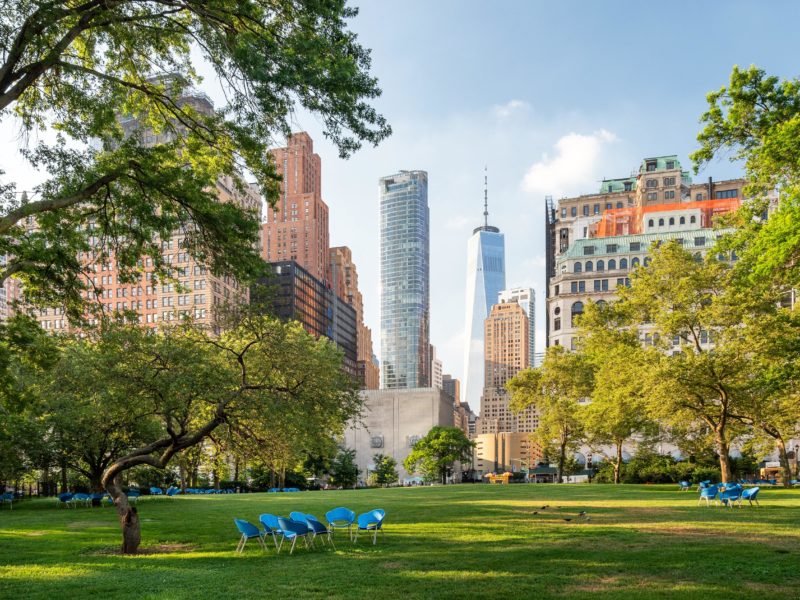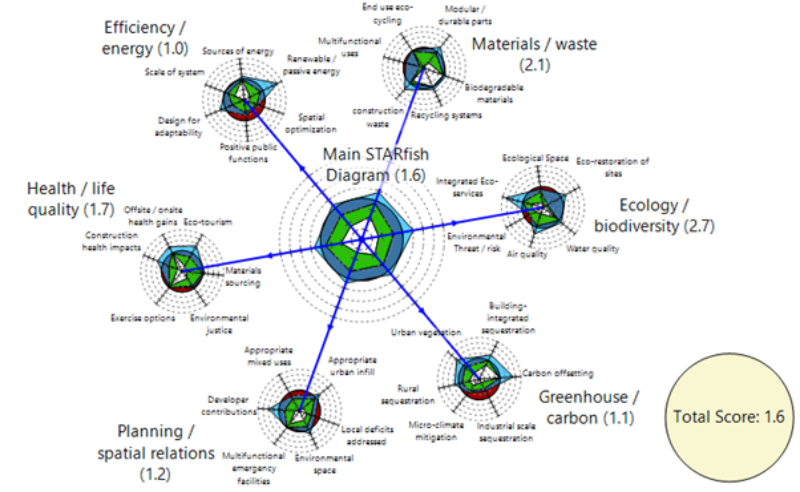‘Nature positive’ must mean more than just slowing down nature’s extermination
With more and more businesses promising to become ‘nature positive’, new standards for planning, design and construction are urgently needed

The GEC Insights series is a curated collection of articles at the intersection of environment and economics, each written by leading thinkers from the worlds of business, government and civil society. Part of our Economics for Nature project, they bring together diverse perspectives to answer the question: how can we re-design our economies to protect and restore nature?
All but ostriches now accept that sustainable development is a business obligation and financial opportunity. Today, some luminaries in the building and business sectors are aiming higher, pledging to achieve not only zero waste, energy, or carbon, but to become nature positive.
Nevertheless, in the construction industry, this usually means partially offsetting a new development project’s own environmental damage by, for instance, adding green roofs or funding offsite nature reserves. This is far from sufficient.
Buildings could save the planet, despite their impacts
Cities, buildings and infrastructure are major contributors to virtually all climatic, ecological, and social problems over their lifecycles. For instance, cities have consistently isolated disadvantaged citizens from basic needs, environmental services and natural security. While so-called ‘sustainable’ buildings destroy less nature than typical development projects, they still cause substantial harm.
Three quarters of the earth’s surface is already scarred by unsustainable development. Over half of all biodiversity was annihilated in the last half century. Urban expansion is fragmenting ecosystems already suffering from pollution, invasive species, diseases and extreme weather.
It is therefore counterintuitive that buildings could save nature and society - but they can. Indeed, they must. Nature degradation caused by urban development can be reversed through a different form of design.
“ Protecting the vestiges of nature is futile without radically transforming the built environment.”
Despite the ecosystems currently crushed by urbanization, cities could be converted into agents of nature-positive sustainability. For instance, they could create more space for ecosystem enclaves and biodiversity incubators than existed before settlement.
To achieve genuine sustainability, buildings must offset more than their share of past and ongoing damage caused during resource extraction and construction. This can only happen with new standards, codes, and tools, based on a new design paradigm: beyond ‘regenerating’ nature for more ‘resilience’ (repair), to design for nature and justice or Positive Development.
Nature-positive solutions already exist
Greening and regenerating the built environment are catchphrases from previous decades that represent weak sustainability. These terms still usually only refer to capturing rainwater and solar energy, reducing emissions and waste, and adding ‘biophilic’ amenities. These mainly only benefit building stakeholders.
Increasingly, people are realizing that, through design, urban environments can go further. They could increase equitable access to basic needs, human rights, nature, and other sustainable development goals - for the wider community. The emphasis in sustainability remains on engineering - efficiency and closed-loop recycling - not design.
Many eco-design technologies are in the pipeline. For instance, new nature-based materials can be used in 3D-printed buildings; fabrics can be made of algae; walls can be made of mycelium; and structures and floors can be made of hempcrete.

Such eco-efficient elements are preconditions of biophysical sustainability. However, resource efficiency and healthy materials are only the reductionist side of the sustainable development equation. The other dimension is design.
Boosting public benefits is as necessary as reducing impacts
In themselves, engineering approaches such as renewable energy, resource efficiency, circular recycling systems and urban densification, only mitigate negative impacts. More efficiency in providing single functions does not usually maximize public benefits per unit of resource. Reducing urban open space also closes off options for adaptations to unforeseen problems and opportunities.
Positive Development increases natural and social life-support systems in absolute terms. In contrast to green gains, Positive Development aims for overall social and ecological gains; that is, not merely ‘more good than bad’ impacts. It channels multifunctional, nature-based, adaptable and eco-logical design strategies into producing net public benefits.
To have create net-positive gains, most building components must provide multiple benefits for nature and society. By definition, net-positive design requires:
- Ecologically-positive outcomes: increasing nature, or the ‘ecological base’, beyond pre-industrial conditions - not just within systems boundaries like ownership or property limits.
- Socially-positive outcomes: building community, or the ‘public estate’, to increase environmental and social justice on a regional basis - not just within the current limits of duty of care to workers and occupants.
Genuine sustainability will require structures to create net public gains at a rate that outpaces the growing social inequities and nature degradation from other causes.
Building-integrated, nature-based systems can provide biodiversity habitats, building services, and social benefits. Merely landscaping the remainder of a building site for biodiversity is not nature positive. It cannot compensate for the ecological losses due to the building’s land coverage, let alone its manufacturing.
In contrast, nature-positive building elements can provide virtually every kind of ecosystem service (eg. natural water purification, cooling and heating, carbon absorption and oxygen production) along with human social, mental, and physiological benefits.

Passive, building-integrated ecosystem services need not occupy land area, and are generally more adaptable to changing social needs and climatic conditions than mechanical equipment alone.
Retrofitting is a huge business opportunity
Retrofitting or renovating cities is necessary. If all old wasteful buildings were replaced by new green ones, the material flows used in doing so would destroy the planet. Moreover, to meet a genuine sustainability standard, new green buildings will need to be upgraded.
Retrofitting has proven to pay for itself as the contractors are paid back from the client’s energy savings. Eco-positive retrofitting would go further to create net public gains and turn cities into garden resorts.
Business should invest in demonstrations of verifiably net-positive retrofits and necessary new buildings. Demonstrating net-positive solutions in new and retrofitted living environments could jump start the transformation to genuine social, ecological and economic sustainability. But how do investors know what is net-positive when most green designers don’t?
Years ago, I sought support for the first net-positive building proposal. The government body’s ‘green’ economic consultant insisted I show where it had been done before, so he could assess its financial feasibility with anachronistic tools. A net-positive design and assessment tool might have helped, but none existed before now.
Conventional green building tools are insufficient
Building assessment tools, like accounting tools generally, largely ignore nature and count indoor environmental quality and human health in the ecological category. The standard is reductions in negative impacts compared to code-compliant buildings.
To address my criticisms, reductions in negatives are increasingly called ‘positive’. They don’t really recognize net gains for the public or nature.
Some green building certification companies and design tools have added terms like ‘climate positive’ or even ‘net positive’ onto old assessment frameworks. However, they really only mean adding more nature than was on site before construction - not before pre-urban times. This does not compensate for increased consumption.
“ If all old wasteful buildings were replaced by new green ones, the material flows used in doing so would destroy the planet.”
Further, rating tools do not expect building designs to compensate for embodied energy and nature, provide multifunctional elements, or be adaptable to changing conditions and contexts.
The STARfish app can aid net-positive design and assessment
The STARfish app guides both the design and assessment of nature-positive buildings and cities (see figure 1). The app fosters a paradigm shift toward net-positive design criteria, strategies, and solutions. It’s underlying logic derives from Positive Development theory, which explains the need for upending existing planning processes and design standards in all respects.
Whereas rating tools use property lines or ownership as system boundaries, STARfish provides a whole-system analysis. For example, it compares design outcomes against fixed, biophysical or bioregional sustainability baselines and benchmarks, rather than typical buildings, practices or site conditions.
As a design tool, STARfish stimulates ideas for positive design elements.
The app’s interactive diagrams and criteria aim to inspire symbiotic design elements. It also calculates preliminary estimates of impacts visually and in real time to allow for quick comparisons of fundamental design alternatives.
Design teams use sliders to estimate impacts in relation to defined negative, restorative and net-positive standards and criteria. The impacts are instantly displayed on the interconnected fractal radar diagrams. Designers can add new impact categories for site-specific issues or priorities, according to set standards.

As an assessment tool, it is totally transparent.
As the design progresses, data on local socio-ecological deficits and material flows can be added from emerging international sources. All scores and weightings require written justifications for full transparency, education and collective advancement of design. This information appears along with the diagrams in the automatically formatted Design Report (see netpositivedesign.org).
What can business do?
Business has an essential role to play in creating demand for net- positive buildings. Next-generation designers and business entrepreneurs will eventually rise to challenges presented by Positive Development.
However, pressure from the business community is necessary to shift the paradigm in the green building sector from design for ‘reduction, recovery and renewal’ to design for net-positive ecological and social outcomes.
Only business can break the inertia in the building sector through the power of investment.
- Dr Janis Birkeland


